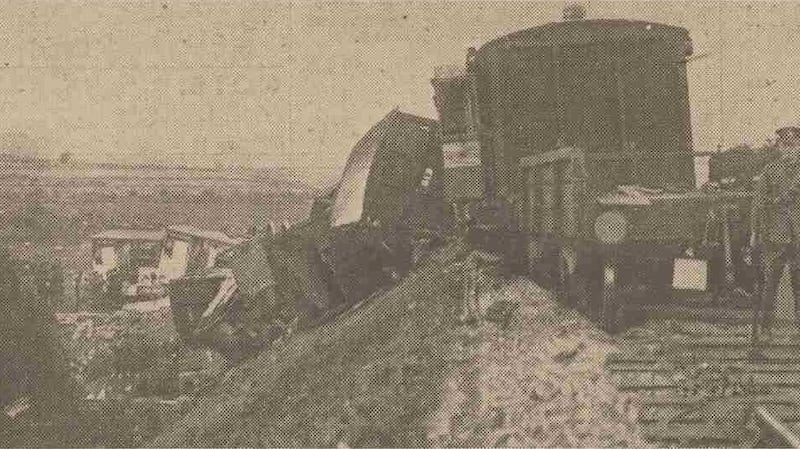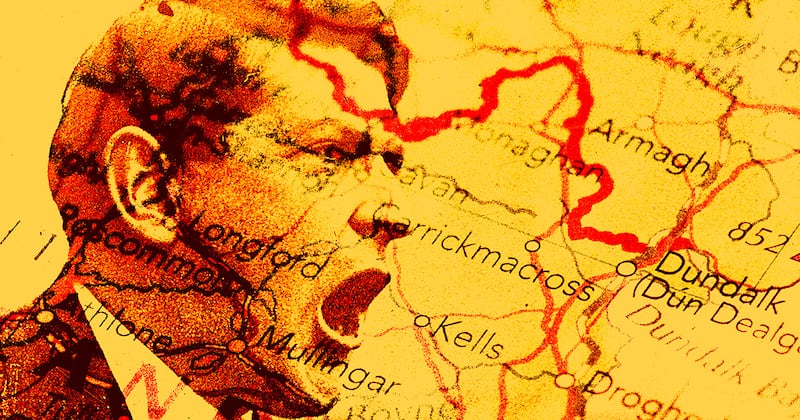The partition of Ireland was not an act but a process. Partition was imposed by the British imperial government as an instrument of policy that marked that government's failure in the wider problem of ruling Ireland. It provided a precedent for later British imperial partitions; a landmark in the genealogy of partitions.
In all partition cases, the imperial government purported to respond to so-called facts on the ground. In the Irish case these facts were the resistance to home rule since 1886 of Irish unionism, and Irish unionism’s distillation into Ulster Unionism in concentrated if truncated form by the Ulster campaign that followed on the Parliament Act of 1911.
This piece of legislation, introduced for United Kingdom internal political reasons – to pass Lloyd George's "people's budget", which the House of Lords wished to block by the removal of the legislative veto of the upper house – made the passage of some kind of home rule Bill ostensibly inevitable.



No British government, Liberal or Tory, had wished to introduce a home rule Bill since the defeat of the second home rule Bill by the House of Lords in 1893. The Tory Party had opposition to home rule as core to retention of the empire at the heart of its policy and was committed to killing home rule by kindness.
The Liberals after Gladstone appreciated that there were no votes in England or Scotland in supporting home rule for Ireland. Many of their key figures, such as Asquith and Lloyd George, were in any case imperialists, and sympathised to a degree with Tory outright opposition.
So despite a Liberal landslide in 1906, the party did not seek, nor had they any intention of introducing, home rule for Ireland. The post-Parnellite Irish Parliamentary Party in its various manifestations therefore had little leverage on this issue between 1893 and 1911.
The home rule Bill was introduced by Henry Asquith only because he required the votes of Redmond and his party to stay in power. Bizarrely this need coincided with the removal of the veto of the House of Lords through the 1911 Parliament Act.
So two domestically driven alterations – one a change in the British constitution that changed the balance of power between Lords and Commons, and the other pressing electoral requirements for the Liberals to stay in government, changed the agenda for Irish home rule. The Parliament Act meant once legislation passed through the Commons it could no longer be vetoed by the House of Lords. Once it went through three times it became law.
This became the forcing ground of unionist mobilisation. Unionism was stronger in Ulster, and the cabinet knew that some protections or provisions or remediation would be required to preserve that constituency from immersion in a home rule which neither party had intended to grant up to 1912. The hiatus delay period provided unionism with the space and time to build resistance. The paramilitarisation of Ulster through the Ulster Volunteer Force and the signing of the Scottish-style Covenant, and the British Conservative Party's unequivocal support for that endeavour under the leadership of Bonar Law, was strengthened further by the Curragh mutiny in March 1914, when senior British army officers refused to deploy force against Ulster unionists if they were ordered to do so.
When war broke out the third home rule Bill was said to be on the statute books with the proviso that something would be done for what was called Ulster.
The 1916 Rising saw Asquith send Lloyd George to propose a form of temporary county exclusion for some Ulster counties and home rule for the rest of Ireland – an extremely limited form of home rule.
It could not get through the Tory party, though John Redmond and Joseph Devlin almost succeeded in selling it to northern nationalists as a temporary measure. At the end of the first World War, things were different. Getting the US into the war was the main aim of British strategy through 1916.
The Irish Convention of 1917-18 was set up to demonstrate that the British government was doing something for US consumption. It is clear from the convention that though most Irish unionists aspired to an accommodation with a wider Irish nationalism, the Ulster Unionist representatives had already concluded that hanging back was their best policy.
The last year of the war incorporated the conscription crisis, which further politicised and radicalised Sinn Féin in Ireland. The dubious German plot of the late summer saw most of the new leadership of nationalist Ireland locked up again, and by the 1918 election it was clear that Lloyd George had no intention of doing anything for nationalist Ireland in the short term.
He had other matters to deal with, but choosing Walter Long, a political dinosaur even before the war and a fanatical supporter of Irish unionism, as chairman of the cabinet's Ireland committee signalled the direction to come. Redmond's support for the war effort had been forgotten, and the Irish were to be punished for 1916, the results of the 1918 election and the declaration of Dáil Éireann.
Lloyd George wished moreover to keep his wartime coalition partners in cabinet onside, hence his sympathy for Ulster and for Walter Long's sentiments on the need to punish Irish nationalists. He had other fish to fry in Versailles. As the British-Irish war escalated in 1919, the Irish committee chaired by Long came up with a new Bill – the fourth home rule Bill of 1919, which represented the biggest new initiative on Ireland since 1886. It was effectively a new Bill for the partition of Ireland, creating two new entities to be called Northern and Southern Ireland, and it was for these entities that elections were to be held.
Its novelty lay in this intention to establish two limited-in-power entities on the island of Ireland. Both would remain within the UK and within the empire as before, but the imperative was from a British point of view to establish the new Northern Ireland immediately and make it a fact on the ground. Time was spent discussing with James Craig if the new entity should be four, six or nine counties. It was effectively his call. Once decided, the provision for administration was in train.
The basic structure of a devolved administration was in place from shortly after the Government of Ireland Act 1920 went through. Thus, in the words of Ronan Fanning, "Partition … would be imposed by the British, but the ending of partition would be a matter for the Irish".
The Government of Ireland Bill passed the Commons on February 24th, 1920, and on March 10th, the Ulster Unionist Council endorsed the Bill, with Carson in the chair. It was said that this would take Ulster out of the Irish question “which it has blocked for a generation” and it would take Ireland out of English party controversies. Bonar Law was asked “Will Ulster bit be put in place if the bill is rejected by ‘the rest of Ireland’. ‘Most certainly’ was his reply.”
By the time the Government of Ireland Act, an act effectively for the partition of Ireland, became effective on May 3rd, Craig thought he could feel secure. But the Treaty of 1921, the fact that it was negotiated by a group ostensibly representing all of Ireland, from which specific Ulster counties could move to exclude themselves by December 1922, rather gave the lie to that.
Clause 12 of the Treaty setting up the Boundary Commission which appeared to provide for a consultation with the wishes of the inhabitants gave Craig pause, as he worried that the nationalist majority counties of Tyrone and Fermanagh could slip away. He was careful never again to relax as he had during the Treaty negotiations, and he successful used the murder and mayhem in Ulster over the following two years to secure further military supplies and licence from London. The Boundary Commission would end the partition process; but that was not to be until 1925.
Dr Margaret O’Callaghan is a historian and political analyst at the school of history, anthropology, philosophy and politics at Queen’s University Belfast









